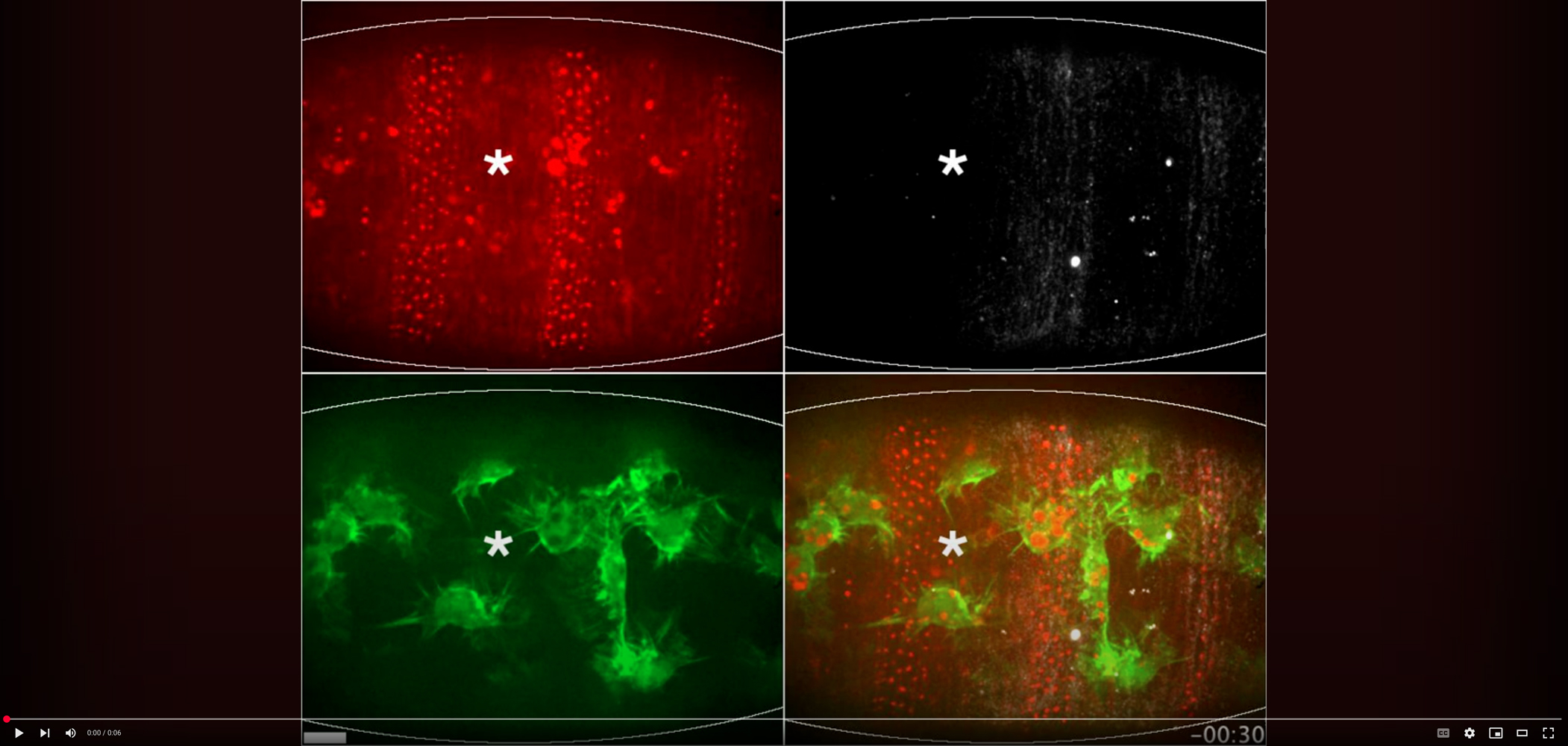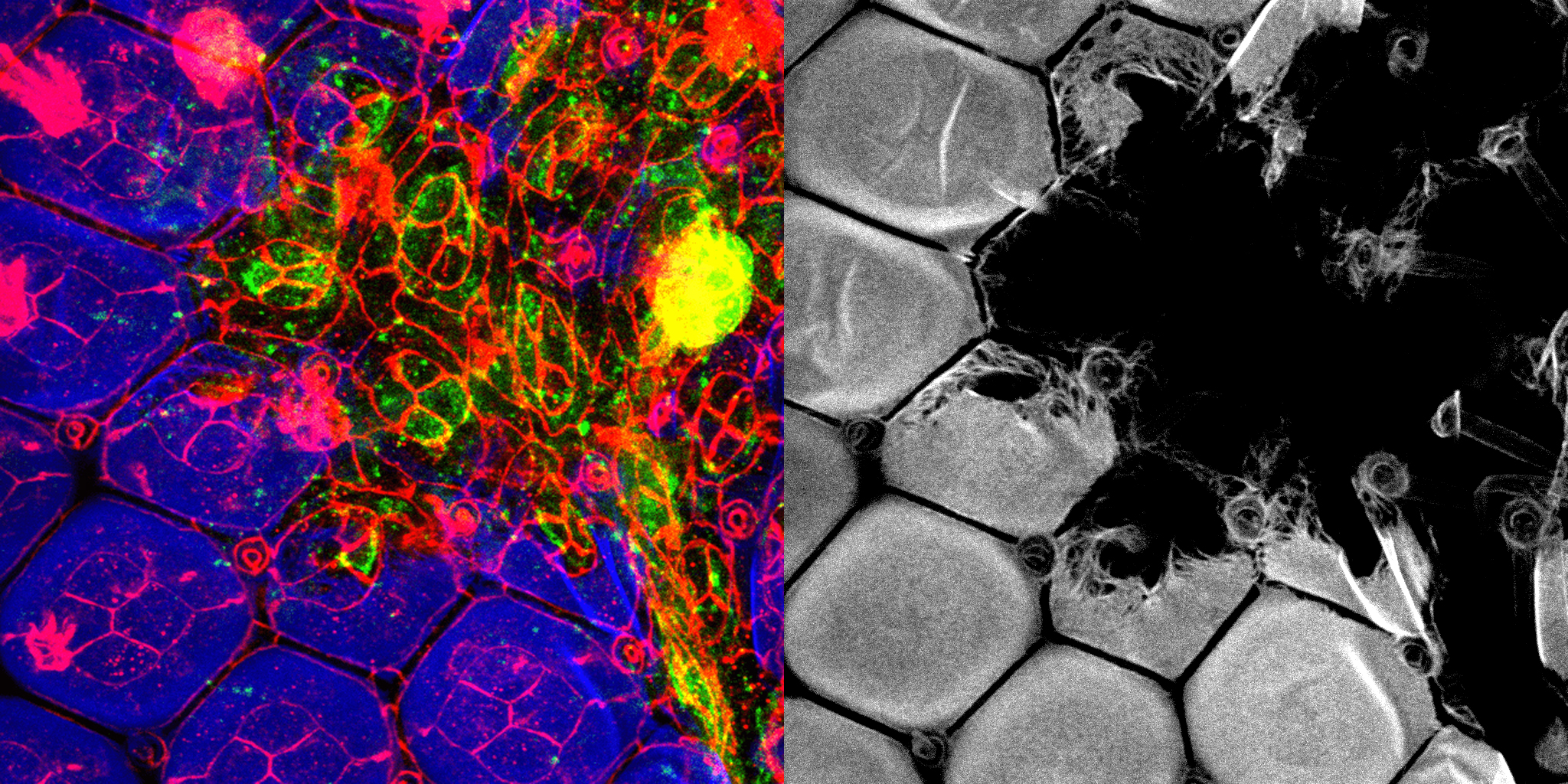2025 WINNERS
Ring of Fire: three-colour, live-imaging reveals ring of distinct necrosis during wounding of the Drosophila embryo
Three-colour live-imaging of a laser-wounded Drosophila embryo (outlined), with the epithelium labelled with Moesin-mCherry (red), embryonic plasmatocytes (‘macrophages’) labelled with lifeact-GFP (green) and a distinct form of necrosis ringing the edge of the wound labelled with far-red Annexin V (white). Laser-ablation (indicated by asterisk) triggers wounding of the epithelium and the inflammatory recruitment of plasmatocytes. This novel, three colour, live-imaging allowed visualisation of a distinct subset of necrosis, extruded chaotically from the edge of the wound. These necrotic cells are extremely swollen, presenting a unique challenge to the plasmatocytes tasked with clearing this tissue damage. Scale bar = 10 µm, Time = minutes:seconds.
Video Credit: Andrew J. Davidson
Andrew J. Davidson, Rosalind Heron, Jyotirekha Das, Michael Overholtzer and Will Wood
Ferroptosis-like cell death promotes and prolongs inflammation in Drosophila.
Davidson et al., 2024, Nature Cell Biology, 26:1535–1544
http://10.1038/s41556-024-01450-7
The ZP protein Dusky-like is crucial for apical ommatidial chitin accumulation
The Drosophila corneal lens is an apical extracellular matrix structure composed primarily of a lamellar array of chitin fibers. Our recent study identified a role of the Zona Pellucida domain-containing protein Dusky-like (Dyl) in controlling corneal lens shape. The accompanying image shows ommatidial cell junctions (Arm, red) in a mid-pupal retina containing clones mutant for dyl (GFP, green). We observed that the dyl mutant clones display a complete loss of apical chitin accumulation (Chitin binding domain probe, blue and in single channel) compared to their adjacent wild-type counterparts which produce large amounts of chitin. Additionally, we observe that dyl mutant regions show apical constriction in contrast to the adjoining wild-type ommatidia. The image was created by maximum-intensity z projections obtained using a Leica SP8 II confocal microscope.
Image Credit: Neha Ghosh
Neha Ghosh and Jessica E. Treisman
Apical cell expansion maintained by Dusky-like establishes a scaffold for corneal lens morphogenesis.
Ghosh and Treisman, 2024, Science advances, 10(34), eado4167.
https://doi.org/10.1126/sciadv.ado4167


